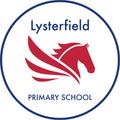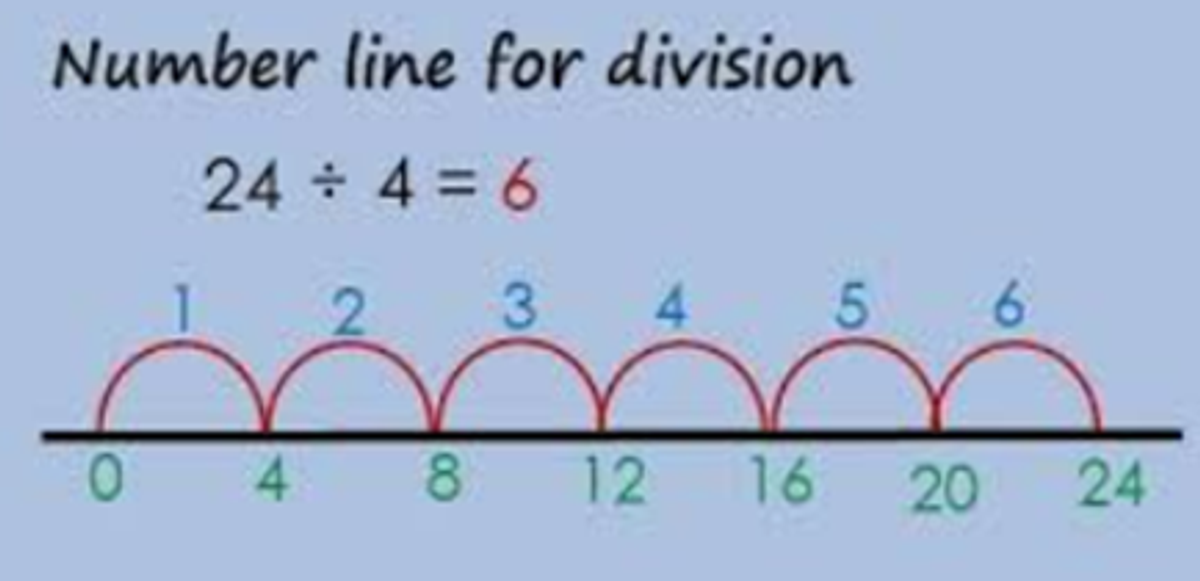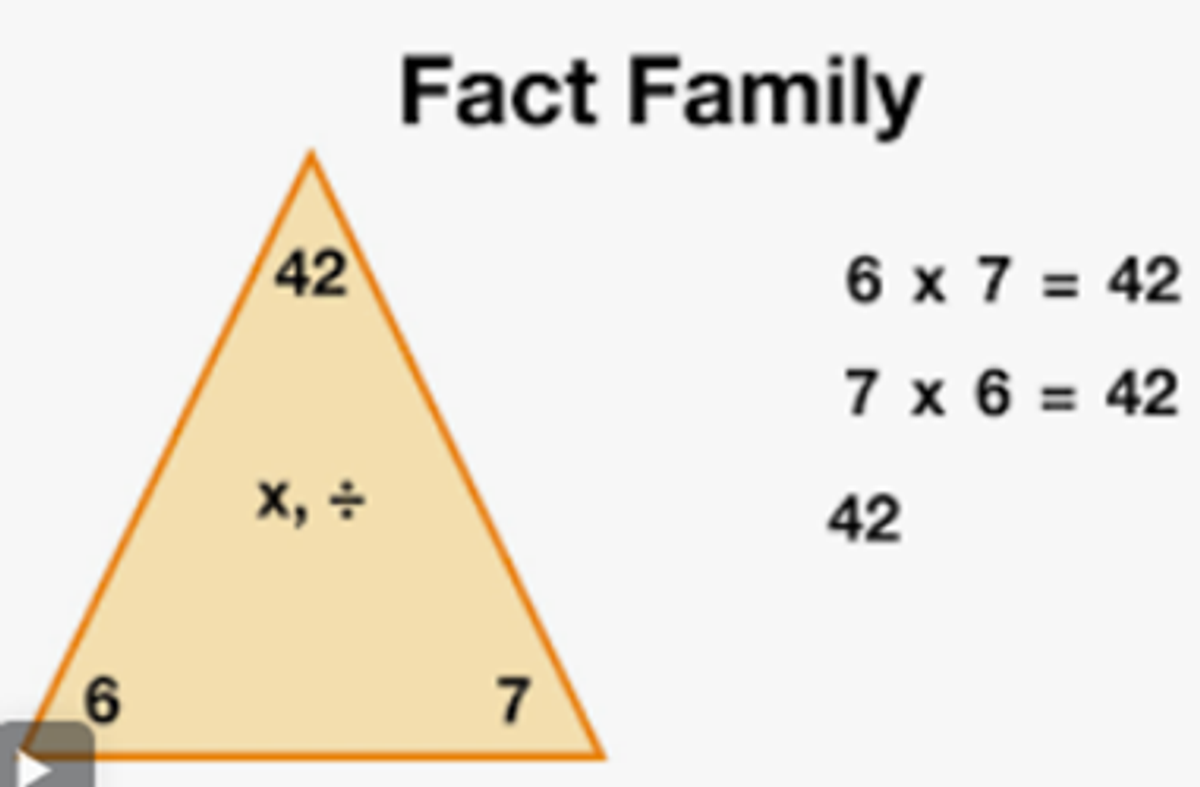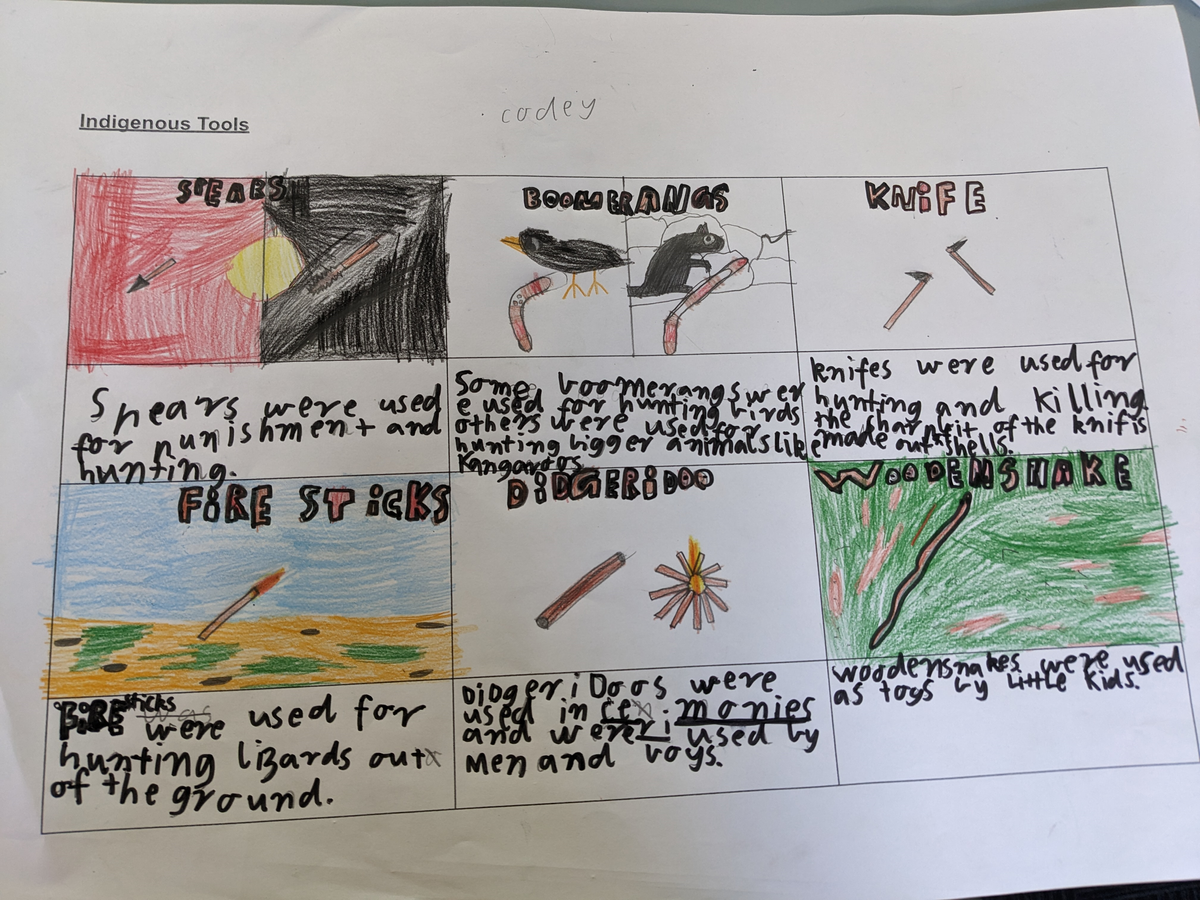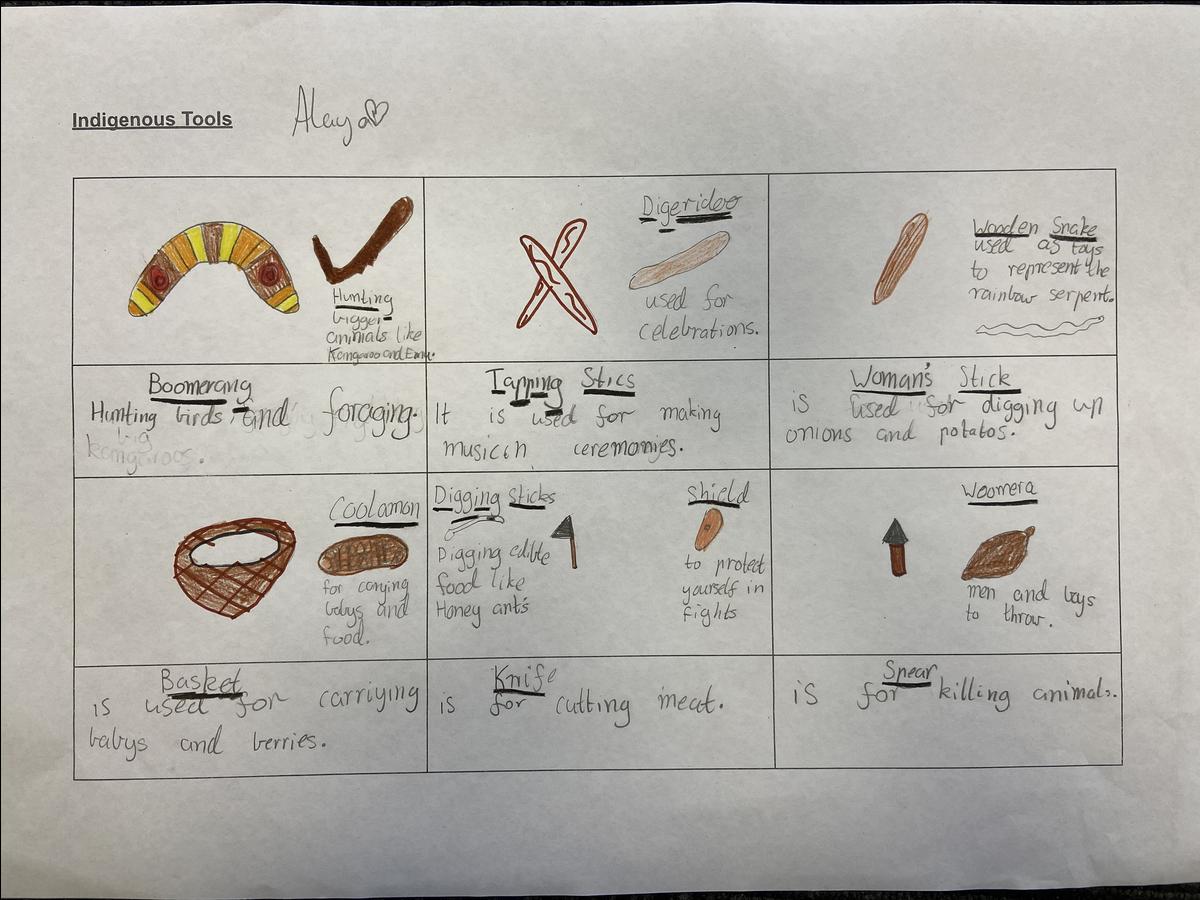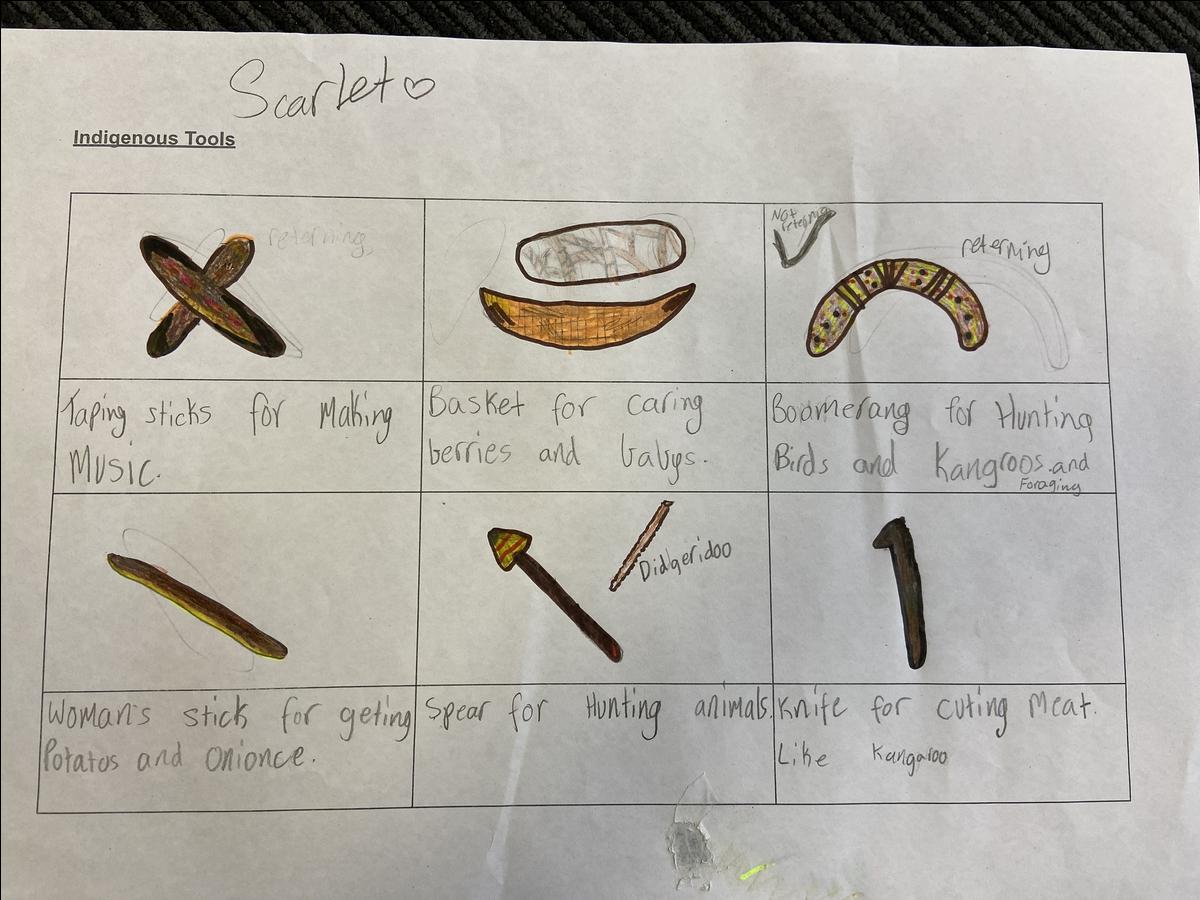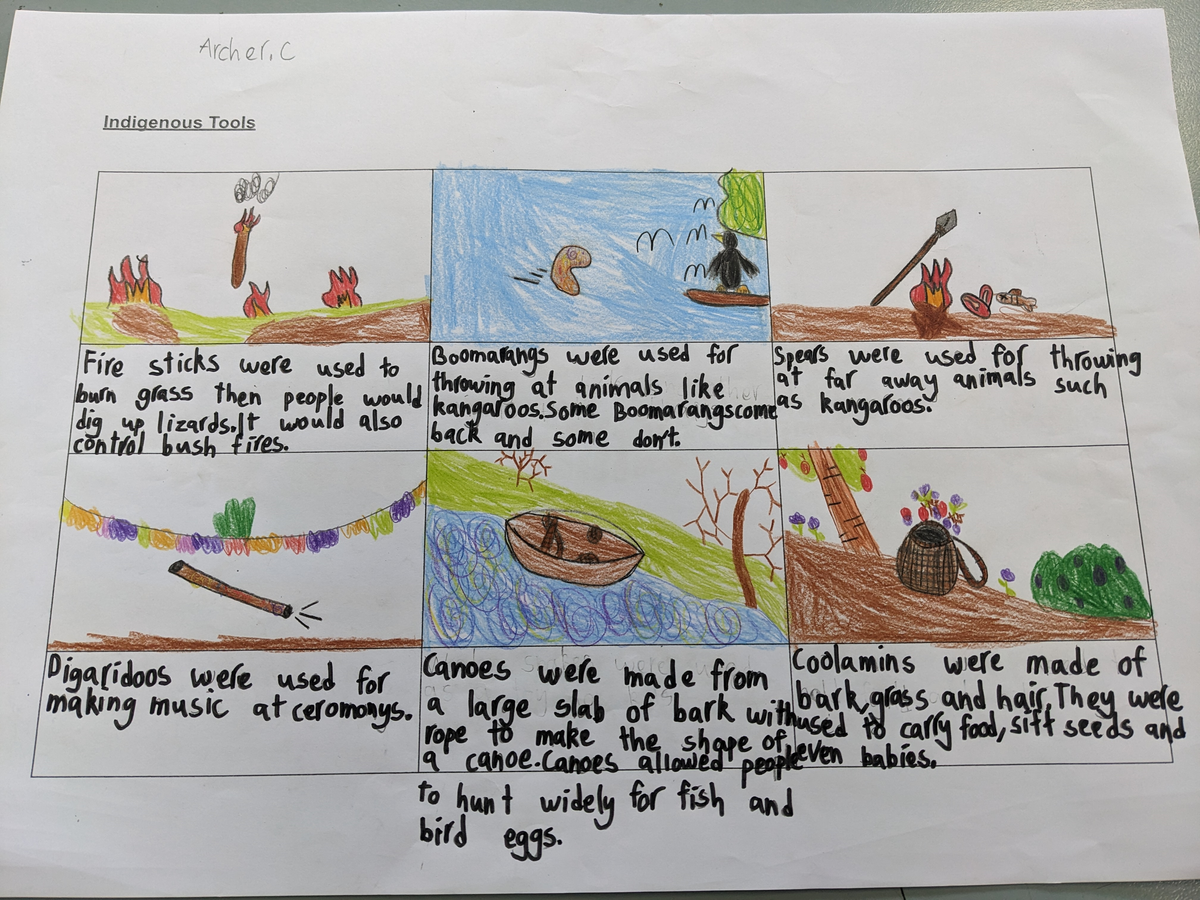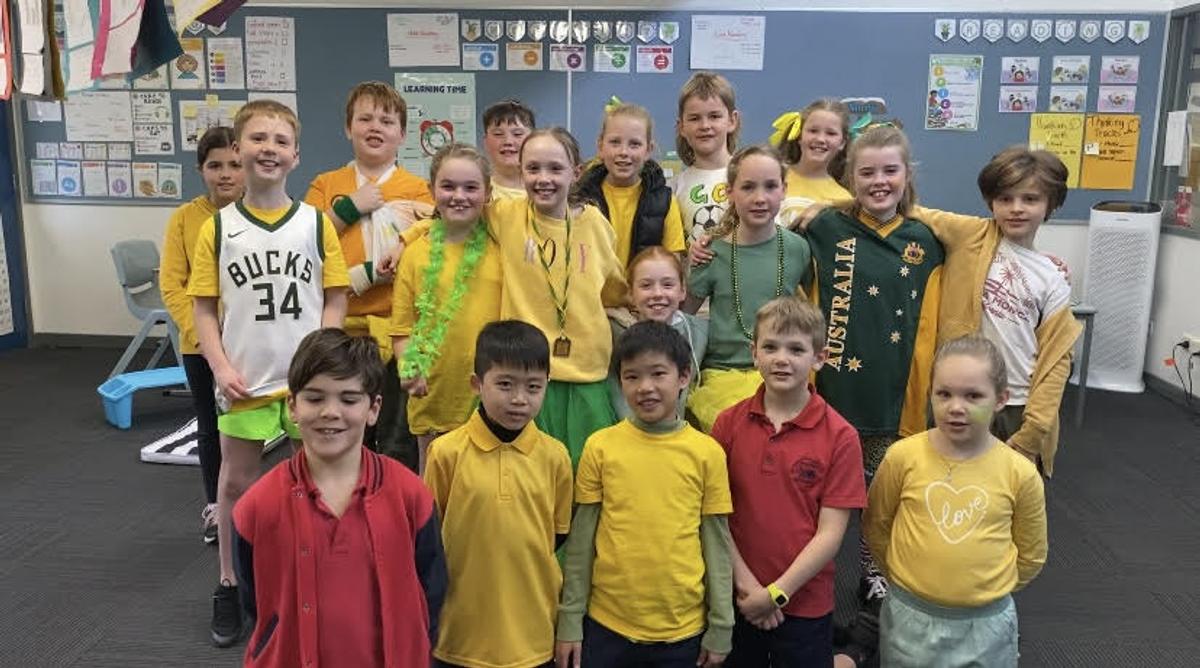Middle School News

Important Reminders
- Grade 4 camp - 18th-20th October.
Information has been sent on Compass with all relevant details.
Please note that payment is due Thursday 31st August.
Any issues regarding this, please see the Office.
Learning in Action
Literacy:
Grade 3:
In the past fortnight, the Grade 3s have been introduced to the elements of biographies. We have read biographies of Indigenous Australians and compared the complexity, detail and language used. From this, students identified which one they preferred and why. As students will be writing a biography in the coming weeks, the writing lessons have focussed on the past tense, using third person, asking open-ended questions and creating complex sentences.
Grade 4:
The students have now finished their poetry unit. The last poem they wrote was a rhyming poem. Not only did they have to find words that rhymed, but it was also necessary to include a similar number of syllables per line to ensure that it flowed when reading it aloud - like a song.
'Four black cats sitting on a cloth.
In the windy air there are three small moths!
Two blue frogs hopping near a fair!
One haunting spider crawling near the air.' Celina
My Pet Spider, Josephine
'Josephine is my spider's name.
Some people think she's rather lame.
Others are just terrified of her,
Josephine has a brown coat of fur.
Her back is printed with a unique pattern.
Sometimes I think that she speaks Latin.
And my plant, she sleeps on, too.
This is all completely true!' Alex
This week the students have begun the open cycle for literacy. This means that they have been reading and writing in different genre styles. The students have tried their hands at producing a comic, and a procedure. The comic consisted of one or two panels and was designed to make a humorous comment on a relatable frustration that happens at home; such as losing a shoe or dad accidentally sitting on the remote which changes the channel at an exciting sport moment.
The procedure writing was linked to the Inquiry History topic, whereby the students wrote a recipe for the early settlers. They needed to consider the types of food that would have been available to make a hearty stew. The students read various procedures and instructions to remind themselves of the purpose and organisational structure of this writing form and then created their own recipes. These recipes were very creative. There was a 'rat stew' and one that contained a handful of bugs.
Preview:
Grade 3:
In the coming weeks, the Grade 3s will be beginning to write a biography on a person of their choice. The students will use different sources to research their person and then plan and write a biography.
Grade 4:
Next week we will continue with the Open Cycle. The students will practise writing a letter, and a biography. The former will be a letter of complaint, taking care to adhere to the formal structure of a letter. The students will need to be thoughtful with their word choices so as to maintain a sense of politeness whilst also getting their point across. We will also read some biographies, and then write one about a class member. As with the Grade 3s, it will be past tense, written in the third person, and contain complex sentences.
Maths:
Grade 3:
The Grade 3s have continued with their study of Division using the sharing aspect and MAB to divide two-digit numbers by single-digit ones (72 divided by 6). They have also used skip counting with number lines to count forwards or backwards and count the number of jumps.
They have linked halving to dividing by 2s and used arrays to split in half. Using arrays also provides a useful way of seeing the relationship between multiplication and division making it easy for students to create fact families. Students can also use known facts to “flip” a multiplication fact into a division one.
As the students have completed their unit on telling time to the nearest minute, they will commence exploring the world of 3D shapes, features and nets.
Grade 4:
The Grade 4s have started division. The students have looked at the two different types of division: sharing and quotition (how many groups of). They discovered that a number line can be used to show the quotition strategy. The students also looked at the connection between multiplication and division, which helped identify factors. Arrays have proved very helpful in seeing the connection between division and multiplication. They have noticed the connection between dividing by 2 and halving (which has become automatic thanks to Maths Masters), and this has also led to being able to halve it again when dividing by 4.
The students have now completed their Investigation on Shape, Symmetry and Area.
Preview:
Grade 3:
Revising all division strategies taught so far and in particular, using grouping and sharing to solve division worded problems. Also linking division to multiplication to solve equations with unknown values i.e. 12 divided by ___ =4
Grade 4:
Next week the students will look at bundling numbers into tens to make larger numbers more workable. Because of the practise we did with multiplication, the students know that 3 goes into 30 ten times.
E.g. 42 ÷ 3
We know that 3 goes easily into 30, so we can break 42 down into 30 and 12.
This makes it much easier to solve when we bundle the larger number into tens.
The students may then be able to extend this strategy into bundling into 20, or 100.
With regard to Geometry, the students will explore the properties of 3D shapes.
Wellbeing
In Friendology we have continued developing the skills of being a good friend, with a focus on what 'Mean on Purpose' is and how to respond with a 'Quick Comeback' when in that situation. We have also discussed how body language or whispering could create misunderstandings.
Inquiry:
Grade 3:
The Year 3s have continued with the making of their posters showing indigenous tools and what they were used for. The students have marvelled at the ingenuity of these tools using natural materials. They have also revised their understanding of the Welcome To Country and this has led to viewing and discussing Aboriginal connection to country. Students will explore the key aspects of indigenous culture - family, land, language, and culture.
Grade 4:
Last week the students related their excursion to the Polly Woodside to what life must have been like on the tall ships for the people on the First Fleet. They watched videos of re-enactments of early explorers and early settlers.
Throughout the term, the students have looked at many different people who influenced Australia's history, and are now putting themselves in the shoes of someone from that era. The students are writing a diary from the point of view of their chosen fictional character, considering the events, living conditions, and style of writing that person would have used.
Preview:
Grade 3:
Students will look at Indigenous artwork, the symbols and their meaning.
Grade 4:
Students will continue to create their diaries.
Matildas Green and Gold Day
It was a wonderful opportunity to celebrate the Matildas' success. Their resilience, persistence, collaboration and ability to accept challenges have inspired all of us. They provided a wonderful example of many working as one. Go Matildas!
